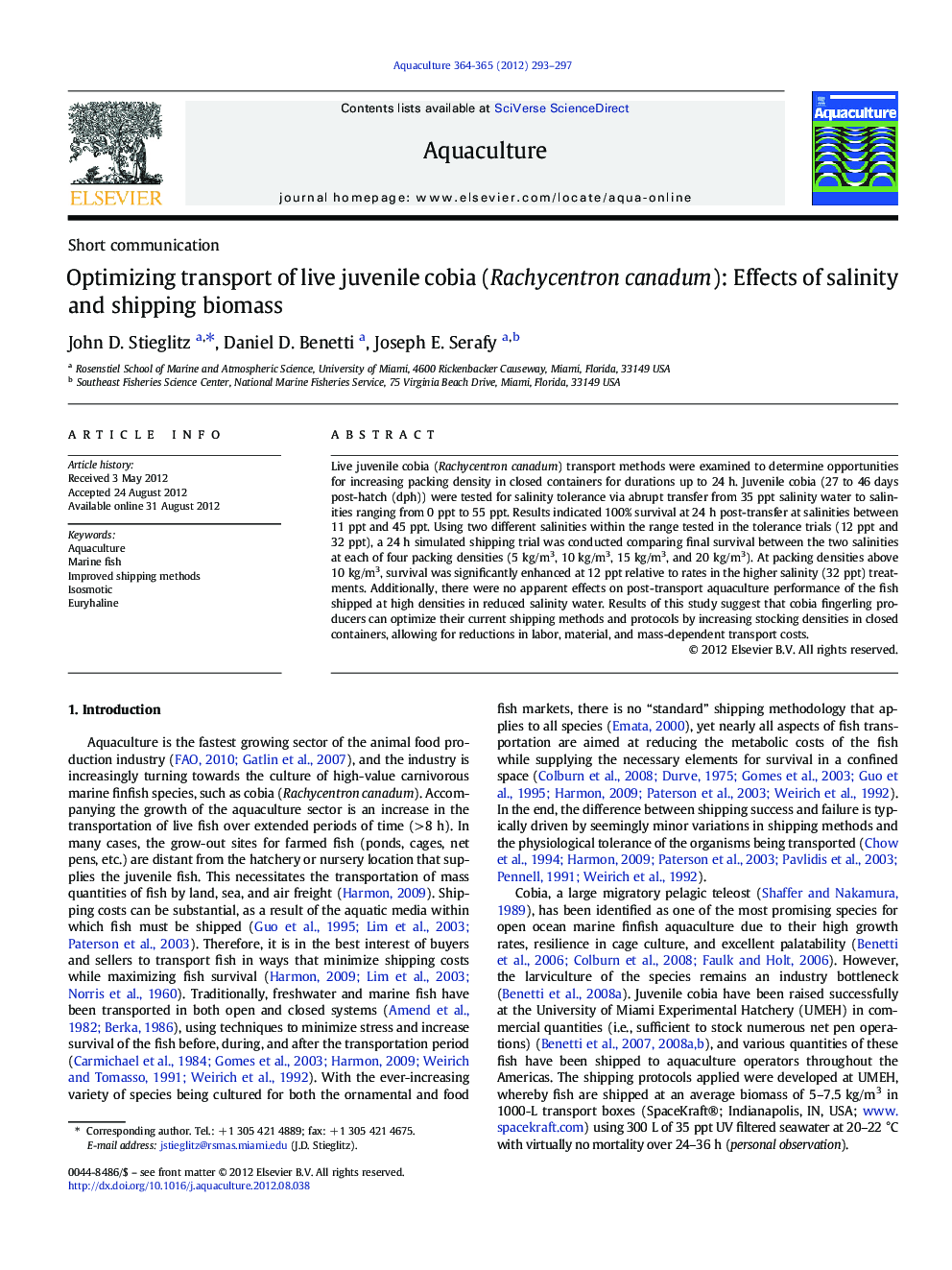| Article ID | Journal | Published Year | Pages | File Type |
|---|---|---|---|---|
| 2422400 | Aquaculture | 2012 | 5 Pages |
Live juvenile cobia (Rachycentron canadum) transport methods were examined to determine opportunities for increasing packing density in closed containers for durations up to 24 h. Juvenile cobia (27 to 46 days post-hatch (dph)) were tested for salinity tolerance via abrupt transfer from 35 ppt salinity water to salinities ranging from 0 ppt to 55 ppt. Results indicated 100% survival at 24 h post-transfer at salinities between 11 ppt and 45 ppt. Using two different salinities within the range tested in the tolerance trials (12 ppt and 32 ppt), a 24 h simulated shipping trial was conducted comparing final survival between the two salinities at each of four packing densities (5 kg/m3, 10 kg/m3, 15 kg/m3, and 20 kg/m3). At packing densities above 10 kg/m3, survival was significantly enhanced at 12 ppt relative to rates in the higher salinity (32 ppt) treatments. Additionally, there were no apparent effects on post-transport aquaculture performance of the fish shipped at high densities in reduced salinity water. Results of this study suggest that cobia fingerling producers can optimize their current shipping methods and protocols by increasing stocking densities in closed containers, allowing for reductions in labor, material, and mass-dependent transport costs.
► We examined the effects of shipping variables on the survival of juvenile cobia. ► Focused on salinity and shipping biomass to determine optimal levels for live shipment. ► Juvenile cobia have a wide salinity tolerance, including abrupt transfer tolerance. ► Lower salinity treatment significantly reduced mortality at increased packing density. ► Potential for significant savings on behalf of cobia producers and operators.
